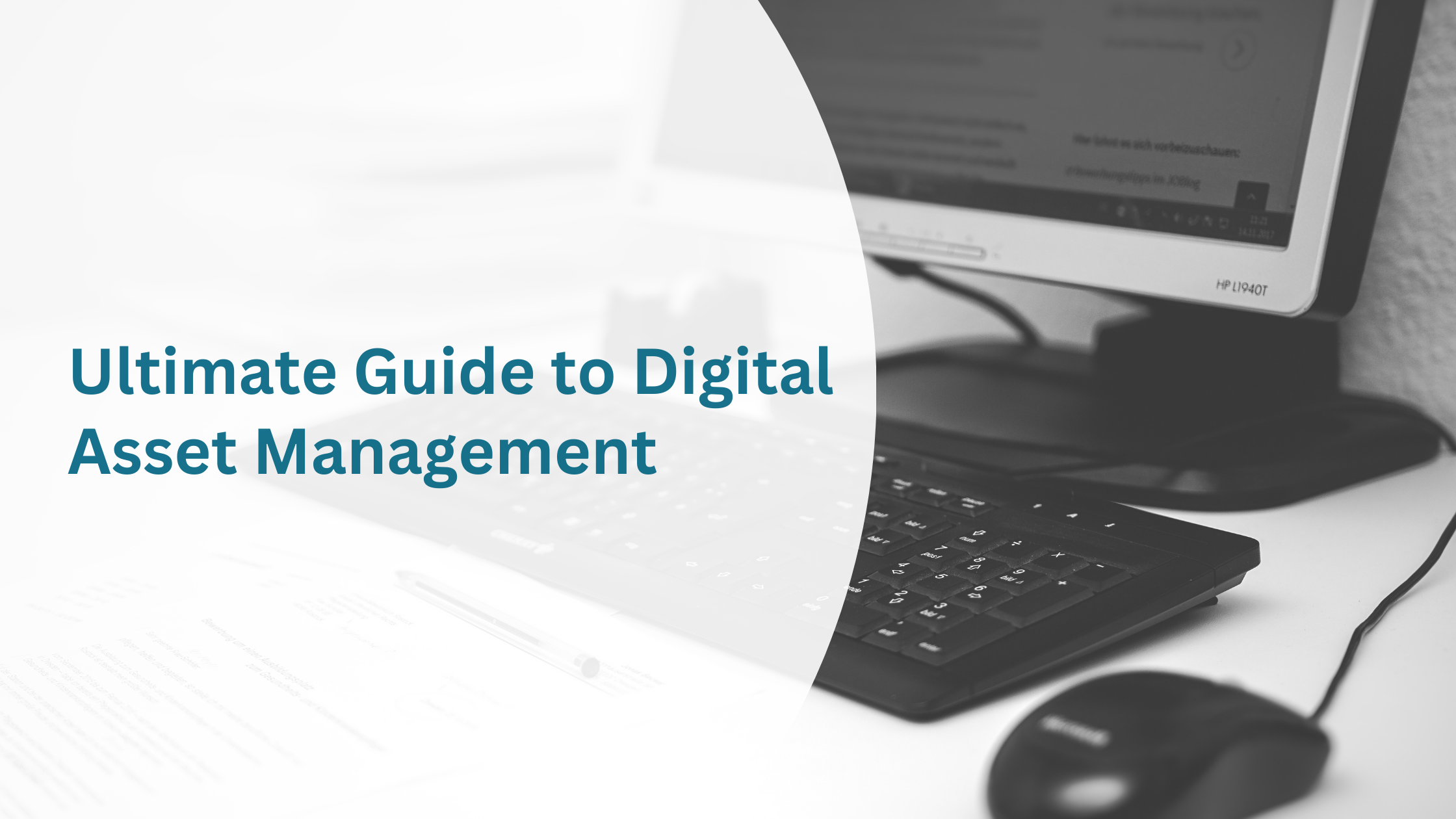OpenAsset Learning Hub
The Benefits of Digital Asset Management (DAM)

Digital Asset Management Benefits That Will Impact Your Business
The benefits of digital asset management (DAM) are numerous and valuable to a long list of different industries. Here we discuss how OpenAsset customers are using their DAM system to improve the productivity and profitability of their businesses.
Why Is Digital Asset Management Important For Your Business?
Digital asset management is important because it enables staff to utilize a single source of truth to sort, store, share and secure the digital assets they need to conduct important business operations like marketing, business development and branding.

In other words, digital asset management is how organizations keep and utilize the digital assets they need to grow their brand, empower their sales teams, and disseminate a clear and purposeful message to their audience.
Digital Asset Management Benefits That Will Help Your Business
A successful digital asset management system offers much more than a simple repository for digital files, it offers enhanced visibility, and provides a single source of truth for creatives, marketers, brand managers, CMOs, and other stakeholders to utilize in pursuit of your business goals.
Improve Brand Consistency
There are many ways to improve the consistency of your brand, but all of them require a substantial amount of time and effort on behalf of your marketing team. Fortunately, there are tools available that make the process easier. By implementing a modern DAM system, like OpenAsset, you enable your team with a centralized system to organize and access their media assets.
Organize Digital Assets into One System
The perpetual need for marketing content means your marketing and branding teams are constantly churning out new content like blog posts, infographics, logos and branding material. But a large media library makes it easier for team members to misplace or misuse a valuable digital asset.
A digital asset management system alleviates that problem by providing a centralized location where users can find, store and share the digital assets they need. That type of functionality not only improves efficiency, but also makes it easier for marketing teams to adhere to a consistent brand strategy and make content as accessible as possible.
Improve Internal and External Collaboration
File sharing via email is no longer a practical means of transferring a large volume of digital assets. Workplace chat software like Slack is a great way to communicate internally with colleagues, but it does not provide the kind of interagency collaboration facilitated by a digital asset management system.
A DAM system enables users to share assets with internal and external partners without additional software. This improves collaboration, and reduces time-to-market for important campaigns. If you’re looking to improve internal and external collaboration, be sure to look for a DAM system that offers support for multiple asset formats.
Support Your Video Marketing Strategy
Video files are typically large and come in several formats which makes it difficult to launch, manage and support video-centric marketing campaigns. Fortunately, an enterprise DAM with video capabilities enables you to automate the production of video variations at scale. That means your team can serve the right version of your video — at the right time — to the right person — no matter their screen, bandwidth or platform.
Minimize Legal Risk and Ensure Compliance With Usage Rights
From international clothing brands to architecture firms and construction companies, if you have a logo, your business is likely to encounter an issue with regulatory compliance. In addition to intrinsic issues with brand consistency, marketing and communications teams need also track the use of licensed photos, images, or other assets.
What’s more, license rights and regulations often vary from region to region. Fortunately, a DAM system enables your team to stay in full control of compliance by enabling your team to:
- control content usage,
- track compliance with regulatory obligations,
- involve legal, risk and compliance managers in the content validation process,
- enforce communication embargoes,
- segment assets and content by localization, language and market,
- eliminate off-brand or off-message communications, and
- avoid penalties for copyright infringement or regulatory non-compliance.
Deliver A High Quality Customer Experience At Scale
According to a report compiled by Oracle, companies are beginning to improve their customer experience through digital transformation and the development of more targeted strategies, but they are not performing as well as they think they are.
Unfortunately, businesses often fail to successfully execute due to fears about implementation, inability to align with existing systems, and high costs. Fortunately, DAM technology has evolved to provide processes and automation to directly address these fears.
By implementing a modern DAM system, you enable your team with the capabilities they need to deliver a consistent brand message, and support omnichannel customer experiences at scale without extra effort.
Enable Your Sales Channels To Pursue Local Initiatives
The best way to support your sales efforts is to enable your sales organization to adapt content and sales material to the constraints of their local market. One way to do this is to improve the agility of local teams by arming them with the right assets to achieve their goals.
An enterprise DAM with distributed marketing capabilities can provide your local sales and marketing teams, affiliates, distributors and partners with customizable campaign kits and media collections that span that whole range of media. With template-based customization, you can enable easy and timely local production, ensure brand consistency and guarantee that legal compliance is never an issue.
Support Sales Channels and Marketing Channels
Sales and marketing need to collaborate on mission critical content, and distribute high-converting assets like datasheets and customer success stories. The right DAM system enables marketing and sales to communicate and transfer valuable digital assets with speed, ease and efficiency.
Armed with the power of self-service, your sales, marketing and communications team can collaborate more effectively; locate the assets they need, and capitalize on opportunities without unnecessary downtime.
Streamline the Content and Media Lifecycle
As your business grows, your content and digital asset library will grow exponentially. A digital asset management solution can streamline this process and serve as an incubator for all branded content, enabling teams to ideate, create, share, and manage assets from inception to publication.
Integrate Your Marketing Tech (Martech) Stack
Modern DAM systems are a wash with innovation and functionality, but they can’t do everything. Fortunately, DAM systems like OpenAsset are packed with integrations that enable your team to utilize their favorite apps, tools and software via a seamless workflow and user interface.
In fact, the only way to truly integrate and build a martech stack is to create a strong data foundation through DAM focused on the people, the process, and the technology that affects your content.
Measure the ROI and Performance of Digital Assets
Every department needs to generate reports to inform stakeholders and answer specific questions. It can be a frustrating process, especially if you rely on uncustomizable, canned reports from external sources.
A digital asset management system enables you to create customizable usage reports for governance and track your assets wherever they’re activated, unlocking previously inaccessible data views.
In other words, a DAM makes it easier for your team to measure and report on the usage and performance of digital assets across different channels, and/or consolidate performance reports across product category, geography, and audience segment.
Repurpose High Performing Content
A key aspect of digital asset management software is the visibility it provides to your team. By providing a birds-eye-view of your digital asset library, DAM software enables your team to extend the value of media assets by identifying high-performing content to reuse and repurpose.
DAM software, thereby, makes it easier for your team to adapt existing digital assets for other creative purposes. With maximum accessibility over past and current media, your team can breathe new life into concluded projects while saving time, money, and resources by retooling existing assets.
Consolidate Redundant Tools and Automate Repetitive Tasks
Ultimately, much of the value that a DAM provides is found in the number of redundant tools, tasks and capabilities that it consolidates. The right DAM system also automates tedious workflows and repetitive tasks so your team can focus on what matters, building your brand and growing your business. Follow the link to learn more about workflow automation and the benefits of AI in digital asset management
What Is The Future Of Digital Asset Management?
The post-pandemic shift towards more dynamic workflows that empower both teamwork and individual excellence are more important than ever. While working remotely, many professionals have had to adapt the ways that they work to be able to achieve team success with little or no in-person contact.
Fortunately, the future of digital asset management is bright as more and more decision-makers find value in DAM, and see the many benefits it provides to their hybrid workforce.
How To Get Started
We hope this guide on the benefits of digital asset management was helpful. As you learn about digital asset management, remember that there are a lot of different DAM solutions out there, but only one that is perfect for your team. Contact OpenAsset today to schedule a demo of the only DAM solution designed specifically for firms in the built world.


